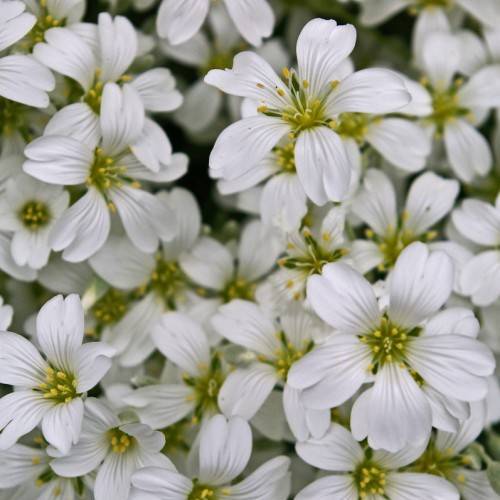
Newfoundland Chickweed
Cerastium terrae-novae
Watering:
Minimal
Hardiness Zone:
Sun:
full sun,part shade
Leaf:
Yes
Growth Rate:
Low
Drought Tolerant:
Yes
Salt Tolerant:
Yes
Invasive:
Yes
Care Level:
Medium
watering
Regel's Chickweed prefers a consistently moist to wet soil, so it's best to water it frequently. For optimal growth, water the Regel's Chickweed once or twice a week, ensuring that the soil remains moist but never soggy. Make sure to water the plant deeply enough to penetrate the soil at least 2 to 3 inches down, and don't forget to check the soil moisture a few inches below the surface. During the summer months, you may find it necessary to water the plant more frequently—up to 3 times a week if temperatures dip below average.
sunlight
Regel's Chickweed (Cerastium regelii) typically prefers full sun or partial shade. It requires around 6-8 hours of direct sunlight per day. The plant prefers warm temperatures, as it is native to southern Russia, Ukraine, and other countries in the temperate region. It may not be able to tolerate temperatures above 90°F (32°C), so ensure that its location is sheltered from the hot afternoon sun. If planted in a location that blocked from too much sunlight,Regel's Chickweed may become spindly and tall and, as a result, the plant will produce fewer flowers. If planted in partial shade, high humidity levels can help to protect the plants foliage from wilting too quickly.
pruning
Regel's Chickweed should be pruned a few times each growing season. In the early part of the season, it should be lightly pruned in order to remove any dead or diseased stems. This will help the plant to stay healthy and to grow compactly. Later in the season, the stem tips can be pruned to encourage branching and a more compact structure. Pruning should be done at least twice and should be done in the early morning or late in the evening, to avoid the heat of the day and to avoid stressing the plant with too much sun. Pruning should be done relatively conservatively as the plant can be sensitive to over-pruning. When pruning, it is best to cut back the stem tips just above a leaf node, as this is where new growth will sprout from.
